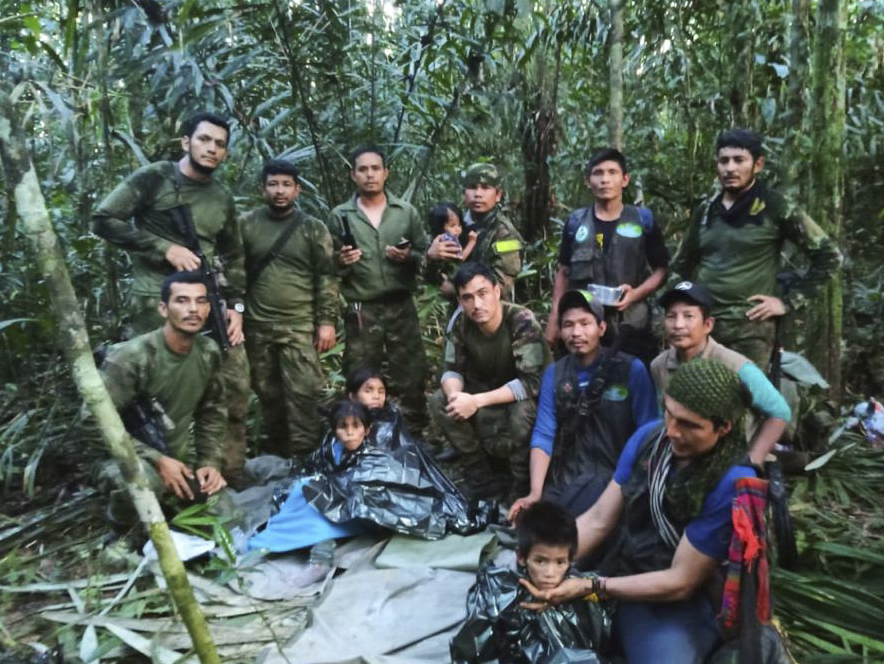BOGOTÁ (AFP) – Lost for 40 days in the Colombian Amazon, four Indigenous children survived eating seeds, roots and plants they knew were edible thanks to their upbringing.
And it was in part down to the local knowledge of Indigenous adults involved in the search alongside Colombian troops that they were ultimately found alive.

“The survival of the children is a sign of the knowledge and relationship with the natural environment that is taught starting in the mother’s womb,” according to the National Organisation of Indigenous Peoples of Colombia (OPIAC).
The four siblings survived a small plane crash on May 1 that took the lives of the pilot, their mother and a third adult. The family of the children clung to hope that the siblings’ familiarity with the jungle would see them through.
The “children of the bush”, as their grandfather called them, survived eating yucca flour that was aboard the doomed plane, and scavenging from relief parcels dropped by search helicopters.
But they also ate seeds, fruits, roots and plants that they identified as edible from their upbringing in the Amazon region, Luis Acosta of the National Indigenous Organisation of Colombia (ONIC), told AFP.
“We have a particular connection to nature,” Javier Betancourt, another ONIC leader, told AFP. “The world needs this kind of special relation with nature, to favour those like the Indigenous who live in the jungle and take care of it.”
During the search, soldiers worked side by side with Indigenous trackers for 20 days.
Colombian President Gustavo Petro praised what he called a “meeting of Indigenous and military knowledge” that he said showed respect for the jungle.
Army helicopters broadcast recordings of the childrens’ grandmother telling them in the Indigenous Huitoto language to stay put in one spot until rescuers reached them. “It was President Petro who brought us together,” Acosta told local media, referring to soldiers and Indigenous experts.
“In an initial meeting, eight days before our search began, the president told us we needed to go with the army because the army couldn’t do it alone,” he added.
More than 80 volunteers from Indigenous territories in the departments of Caqueta, Putumayo, Meta and Amazonas joined around 100 soldiers in what was dubbed “Operation Hope”.
Using machetes, rescuers felled trees and marked them with spray paint to guide the children.






